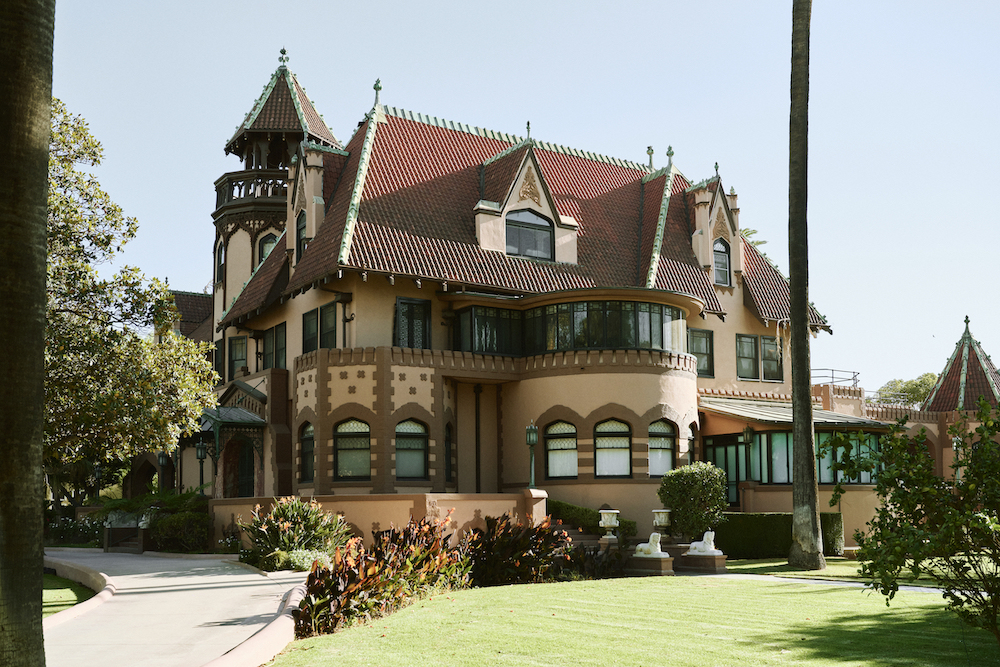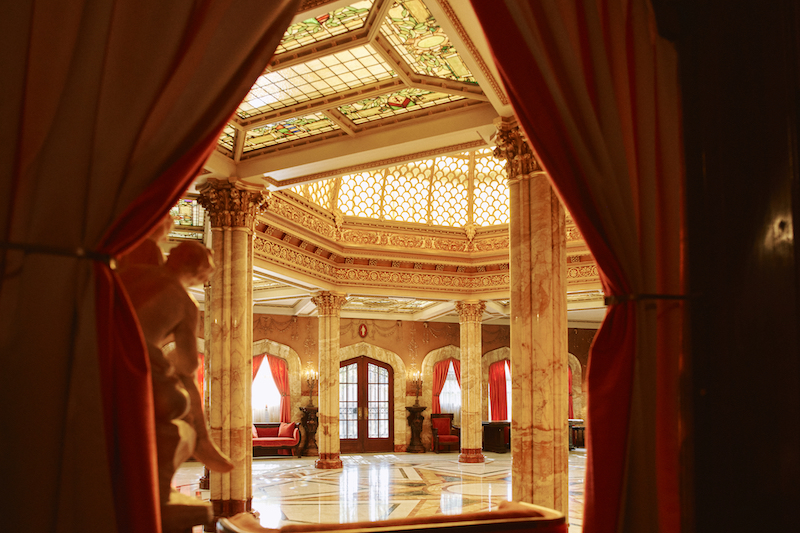Los Angeles in Three Great Houses: Part 2

“Los Angeles in Three Great Houses” continues from last week. This week’s installment looks at the house of a man for whom the California dream came true:
The Doheny Mansion
He had been a drifter, mule driver, fruit packer, and failed prospector – not the résumé you’d expect for the future richest man in America.
The son of an Irish immigrant, Edward L. Doheny grew up in Wisconsin, wandered New Mexico Territory searching unsuccessfully for gold, and in 1891 ended up in Los Angeles flat broke. He lived downtown in a boarding house with an unhappy wife, an ill young daughter who soon died, and overdue bills he couldn’t pay.
Then one day he happened to see a passing wagon loaded with an oozing black substance. The driver said it was brea, or tar, that came from an empty lot west of downtown and was used for fuel. Intrigued, Doheny borrowed money to lease three lots nearby and dug down 150 feet with nothing but a pick and shovel. Then he sharpened a tree trunk, used it for a drill – and in another 50 feet struck oil. His was the city’s first successful well, opening up the Los Angeles City Oil Field, an unregulated circus of speculation with hundreds of wells and operators, soon producing half of the state’s petroleum.
Now prosperous, Doheny would later soar into the stratosphere of wealth. In Mexico, his company drilled the world’s most productive oil well. It spewed black gold 598 feet in the air when it hit, making a noise heard 16 miles away. Over time it yielded 57 million barrels of oil, making Doheny richer than John D. Rockefeller, with more than $100 million.
Along the way in 1900, a sweet thing happened. The now-divorced Doheny often telephoned New York to raise money for his enterprises, placing calls through a central operator named Estelle. Doheny found himself charmed by the sound of her voice on the phone. They met – and soon married.
The couple moved to Chester Place, one of the first gated communities in Los Angeles, off West Adams Boulevard near USC. They paid $120,000 cash for a 22-room mansion designed by architects Sumner P. Hunt and Theodore Eisen in a potpourri of styles: French Châteauesque, Moorish, California Mission, and simply over-the-top. The Dohenys would expand the house to 24,536 square feet over the next 58 years.

Here Estelle raised Doheny’s son, Ned, from his first marriage. But when House Beautiful magazine ran a story about the mansion, tourists began appearing on the lawn and knocking on the door. Doheny quietly bought up the other thirteen properties in Chester Place, assuring his family’s privacy.
With water brought by canal from the Los Angeles River, the Dohenys created vast gardens of trees and flowering plants, employing 17 full-time gardeners. To entertain Los Angeles society with elegant dances and dinners, they added the Pompeian Room, with a mosaic floor of Italian marble and a huge dome made by Louis Comfort Tiffany from 2,836 pieces of iridescent glass.
In the midst of this opulence, tragedy struck the family. Edward was implicated (although never convicted) in the political bribery scandal called Teapot Dome, badly damaging his reputation. His son Ned died in a murder-suicide. Broken, Edward Doheny died a reclusive invalid at age 69 in 1935.
Estelle continued living at 8 Chester Place until her death in 1958. The household staff included three cooks, a kitchen maid, a server, a parlor maid, two second maids, a laundress, a seamstress, a cleaning woman, two housemaids, three chauffeurs, and several secretaries. Known for her generosity, she often helped them with bills or financial hardships, and also gave bountifully for the public good: libraries, schools, a state beach, a world-renowned eye foundation, and more. In a final act of generosity, Estelle Doheny bequeathed all the properties in Chester Place to the city’s Catholic diocese, and today it is a campus of Mount St. Mary’s University.
In many ways the California Dream came true for the Dohenys, and they were gracious enough to pass along their good fortune.
Visiting:
Doheny Mansion: Mount St. Mary’s University, 10 Chester Place, 310-954-4000 for tour information
Jerry Camarillo Dunn, Jr. worked with the National Geographic Society for 35 years. The author of 11 books and 600+ magazine and newspaper pieces, he has won three Lowell Thomas Awards, the “Oscars” of the field, from the Society of American Travel Writers. His “Curious Traveler” column in the Montecito Journal received the SATW gold medal.







You must be logged in to post a comment.